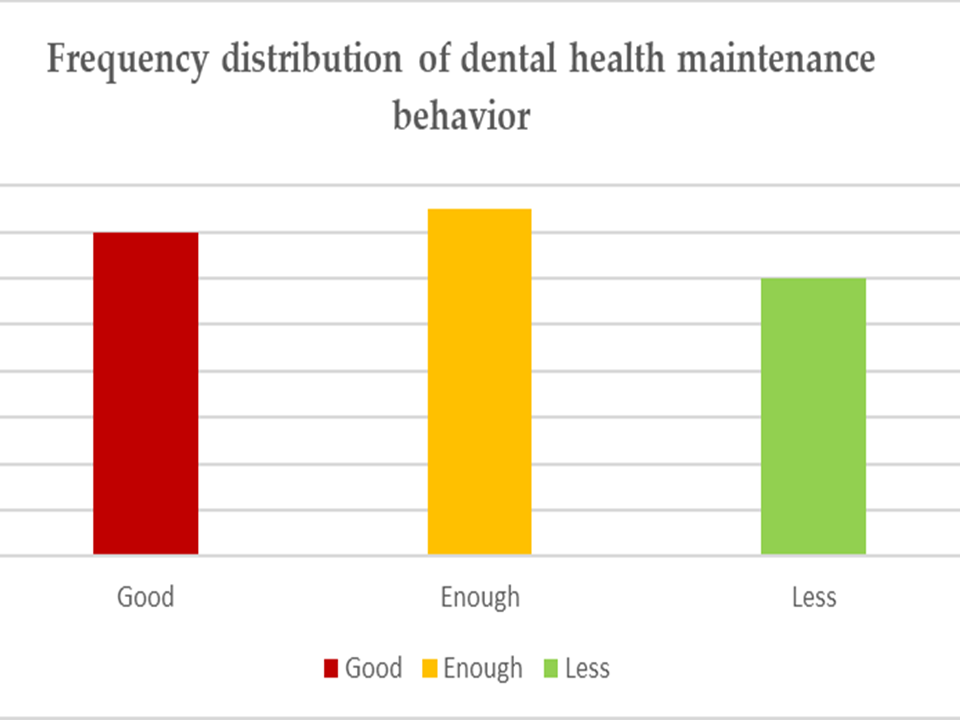Toothbrushing Behavior and The Incidence of Dental Caries In Children
DOI:
https://doi.org/10.23917/bik.v17i2.4502Keywords:
toothbrush, childhood caries, plaque index, DMG-T, behavior managementAbstract
One of the most common children's dental health problems is dental caries. Childhood is the beginning of behavior formation, therefore it is hoped that parents can educate their children to behave correctly in maintaining healthy teeth and mouth.This research used descriptive survey research methods. The design of this research is cross sectional. The research was conducted at MIS Cempaka Putih and MIS Sungai Baru, South Kalimantan. The population in this study was all students in grades 4-6 at MIS Cempaka Putih and MIS Sungai Baru, there are 41 people. The sampling technique in this research used the total sampling method. The variables in this study are children's dental health behavior and the DMF-T index. The data that has been collected will be processed through editing, coding, tabulation and descriptive data analysis. This research was conducted at MIS Cempaka Putih and MIS Sungai Baru Banjarmasin in February 2022. Respondents were 10-12 years old. The dental health behavior of children in the good category was 14 people (34.15%), 15 people (36.58%), and 12 people less (29.27%). DMF-T index in the very high category was 3 people (7.32%), high was 4 people (9.76%), medium was 18 people (43.90%), low was 13 people (31.70%), and very low 3 people (7.32%). Based on the research results, it can be concluded that the dental health behavior of children in grades 4-6 at MIS Cempaka Putih and MIS Sungai Baru is mostly adequate for 15 people (36.58%). The class 4-6 DMF-T index in MIS Cempaka Putih and Sungai Baru has an average value of 3.5, including the medium category.
Downloads
References
Amri UH, N. H. (2016). Effect of Breastfeeding Duration Toward def-t Index of 2-3 Years Old Childin Posyandu Puskesmas. Andalas Dental Journal, 1(1). https://doi.org/10.25077/adj.v4i1.47
Astoeti TE, Jenie I, K. I. (2003). Behavioural Relationship to Dental and Oral Hygiene of Elementary School Students of DKI Jakarta with Crowded Teeth. Journal of Dentistry, University of Indonesia, 8(2), 490.
Cahyaningrum. (2017). The Relationship between Maternal Behaviour and the Incidence of Dental Caries in Toddlers at PAUD Putra Sentosa. Journal of Epidemiological Periodicals, 5(2). https://doi.org/10.20473/jbe.V5I22017.142-151
Fatimatuzzahro N, Prasetya T, A. W. (2016). Overview of Dental Health Behaviour of Elementary School Children in Bangsalsari Village, Jember Regency. Ikesma Journal. 2016; 12(2): 85-86,88., 12(28), 85-88.
Hidayah. (2021). Overview of the Level of Knowledge of Dental and Oral Health in Parents of Pre-school Age Children. JKGM, 3(2).
Keloay P, C Mintjelungan, D. P. (2019). Overview of Tooth Brushing and Plaque Index in Students of GMIM Siloam Tonsealama Elementary School. E-Gigi, 7(2), 77.
Kemenkes RI (2018). Basic Health Research Report. In Basic Health Research. Balitbang Kemenkes RI.
Liena. (2020). Risk Factors Associated With Caries Lesion in Permanent First Molar in Children. International Journal of Environmental Research and Public Health, 17, 1421. https://doi.org/10.3390/ijerph17041421
Liza. (2020). Parents' Knowledge, Attitudes and Actions towards Dental and Oral Health. JIM FKep, 4(1), 188-189.
Manbait MR, Fankari F, Manu AA, K. E. (2019). The Role of Parents in the Maintenance of Dental and Oral Health. Dental Therapist Journal, 1, 2. https://doi.org/10.31965/dtl.v1i2.452
Rizaldy. (2017). Parents' Behaviour towards the Maintenance of Children's Dental Health at Mekarjaya State Elementary School. Unpad Journal of Dentistry, 29(2), 132. https://doi.org/10.24198/jkg.v29i2.18577
Safitri. (2015). Relationship between Knowledge Level of Tooth Brushing Frequency and Dental and Oral Hygiene in Class IV Students of SDN 28 Mataram. Ganec Swara. 2015, 9(2), 118.
Sari N., Amalia R., S. A. (2021). The Association Between Parenting Styles and Feeding Styles on Early Childhood Caries. Scientific Dental Journal, 5(2). https://doi.org/10.4103/SDJ.SDJ_52_20
Suratri M, Sintawati, A. (2016). Knowledge, Attitude and Behaviour of Parents on Dental and Oral Health in Kindergarten Age Children in Yogyakarta Special Region and Bante Province in 2014. Media Litbangkes, 26(2), 120.
Sutomo. (2017). Influence of Parents' Behaviour on Children's Dental Hygiene Status at SDN 3 Karang Jati. Journal of Dental Health, 4(2), 22. https://doi.org/10.31983/jkg.v4i2.3200

Downloads
Submitted
Accepted
Published
How to Cite
Issue
Section
License
Copyright (c) 2024 Ika Kusuma Wardani, Renie Kumala Dewi, Rosihan Adhani, Aprilia Garcia

This work is licensed under a Creative Commons Attribution 4.0 International License.


















